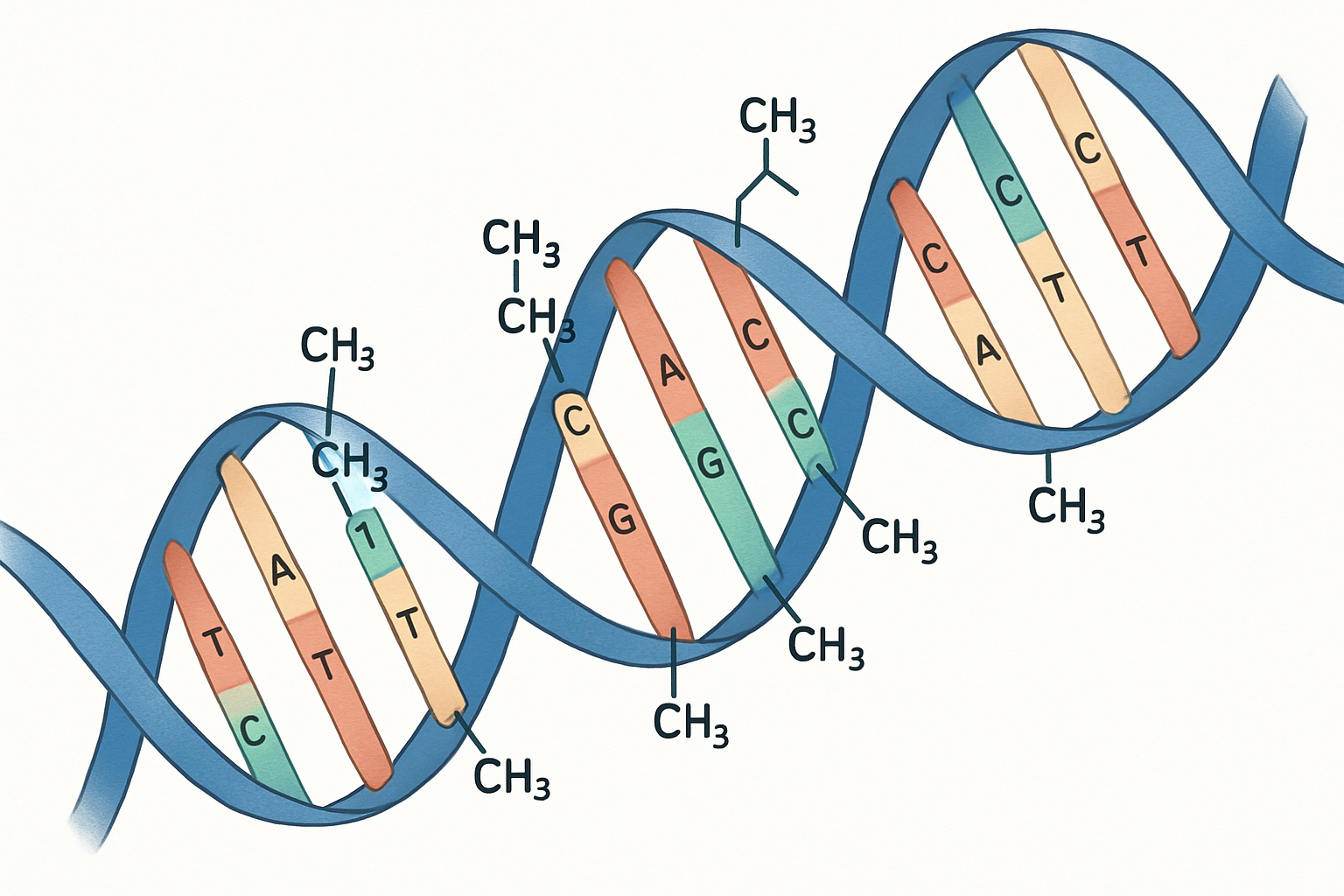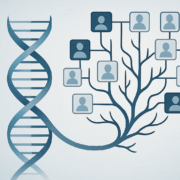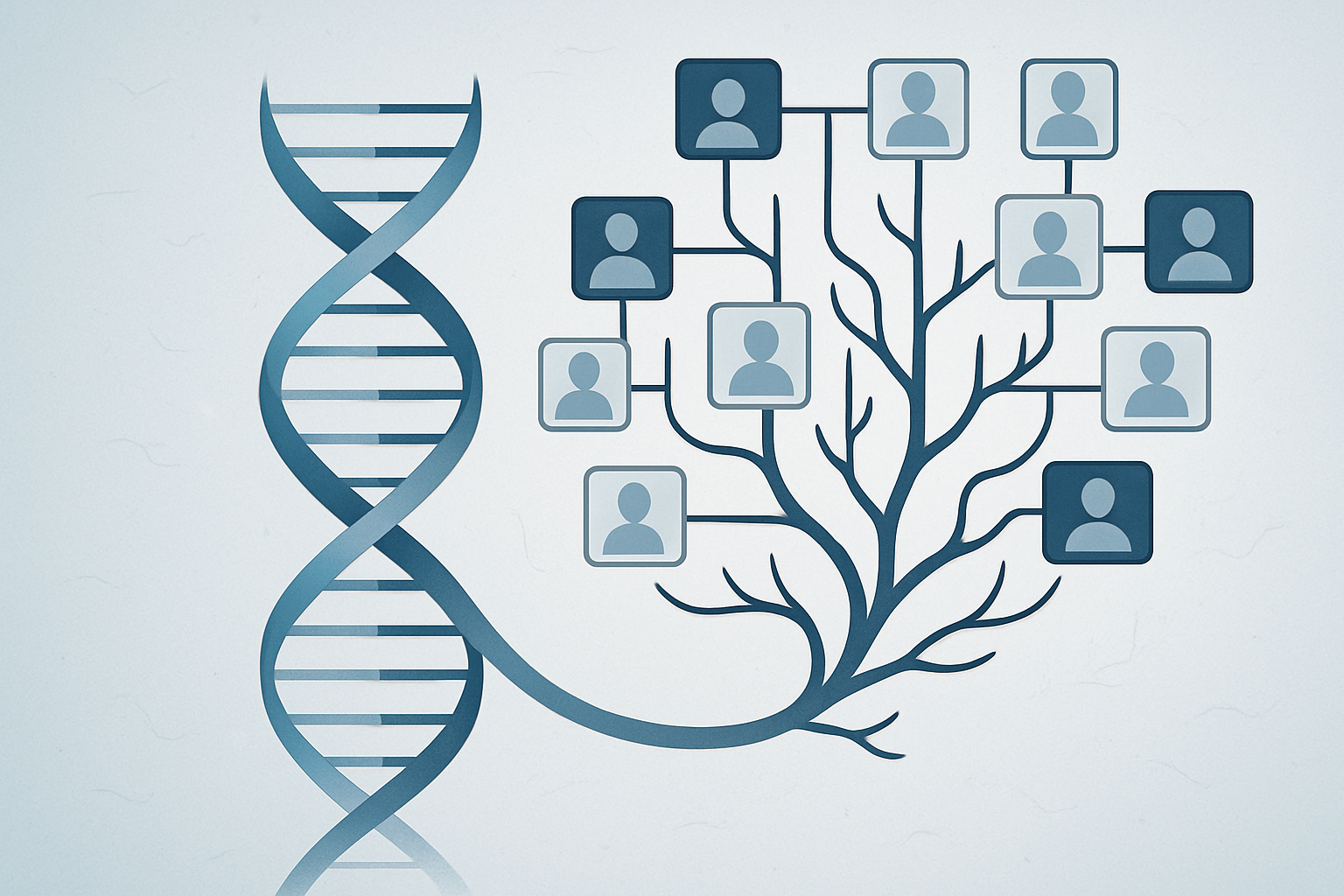DNA methylation is a fundamental epigenetic mechanism where a methyl group (-CH3) is chemically added to a DNA molecule, typically at a cytosine base. This modification doesn’t alter the underlying genetic sequence (the A’s, T’s, C’s, and G’s) but acts as a biological “switch” that regulates gene expression, most often by repressing or “turning off” a gene. Its importance in forensic science is profound: methylation patterns change predictably with a person’s age, are unique to specific body fluids, and can even differ between identical twins, offering powerful new ways to extract intelligence from biological evidence.
The Science of the “Gene Switch”
At its core, DNA methylation is a biochemical process managed by a family of enzymes called DNA methyltransferases (DNMTs). These enzymes transfer a methyl group (-CH3) from a donor molecule (S-adenosylmethionine) to the 5-carbon position of a cytosine base. This process occurs almost exclusively when the cytosine is followed immediately by a guanine base—a sequence known as a “CpG dinucleotide.”
While CpG sites are scattered throughout the genome, they often cluster in regions called CpG islands, which are frequently located in the promoter regions of genes (the area that initiates gene transcription).
Here’s the mechanism:
- When a gene’s promoter region is unmethylated (hypomethylated), the DNA is accessible, and transcription machinery can bind to it, allowing the gene to be “read” and expressed.
- When that same promoter region becomes heavily methylated (hypermethylated), the methyl groups act like physical “stop” signs. They can either directly block transcription factors from binding or, more commonly, recruit proteins that condense the chromatin (the DNA-protein complex) into a tightly packed, inactive state.
The result? The gene is effectively silenced or “turned off.” This on/off switching is essential for normal cellular differentiation—it’s how a skin cell “knows” to be a skin cell and not a liver cell, even though both contain the exact same DNA sequence.
Forensic Applications: Beyond Who to What, When, and How
Traditional DNA profiling (using STRs) is brilliant at answering who a sample belongs to. DNA methylation, however, provides crucial intelligence about the context of that sample.
- Body Fluid & Tissue Identification: Different cell types have unique functions, which means they express different sets of genes. This differential expression is controlled by distinct methylation patterns. Forensic scientists can analyze these tissue-specific differentially methylated regions (tDMRs) to determine if a biological stain is blood, saliva, semen, vaginal fluid, or skin cells. This is incredibly powerful when a DNA mixture is found, as it can help associate a specific person’s DNA profile with a specific body fluid, which is critical for case reconstruction (e.g., “Was the suspect’s DNA from saliva or semen?”).
- Forensic Age Estimation: This is the most well-known application. Certain CpG sites in our genome gain or lose methylation in a highly predictable, linear fashion as we age. By analyzing the methylation status of a panel of these age-associated markers, scientists can build a statistical model—often called an “epigenetic clock”—to estimate an individual’s chronological age. This is invaluable in unidentified persons cases, disaster victim identification (DVI), or for profiling unknown suspects in criminal investigations (e.g., “Is our unknown suspect 25 or 55?”).
- Differentiating Monozygotic Twins: Identical twins originate from a single zygote and share a virtually identical DNA sequence, making them indistinguishable with standard STR profiling. This presents a major challenge if one twin is a suspect and the other has an alibi. However, as twins live their lives, their epigenomes diverge due to environmental exposures (e.g., diet, smoking, disease) and random (stochastic) events. These factors create unique methylation patterns. While still a complex and emerging field, analyzing these subtle differences in methylation offers a promising, and perhaps the only, biological method to link one identical twin, and not the other, to a crime scene.
Forensic Fact
The most-cited “epigenetic clock” model, developed by Dr. Steve Horvath in 2013, was built by analyzing methylation levels at 353 specific CpG sites. This model proved to be so accurate that it can predict age across most human tissues and cell types, earning it the nickname the “pan-tissue clock.”







